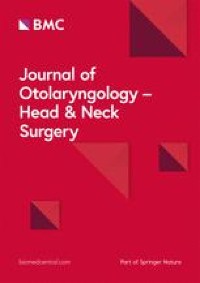Objectives
Investigate outcomes following oral cavity and oropharyngeal salvage surgery.
Methods
Adult patients who underwent salvage surgery for recurrent squamous cell carcinoma of the oral cavity and oropharynx from 1996 to 2018 were analyzed using multivariable Cox proportional hazards regression. Disease-free survival (DFS), overall survival (OS), associated factors, and basic quality measures were analyzed.
Results
One hundred and eight patients (72% oral cavity, 28% oropharynx) were followed for a median of 17.9 months. Median DFS and OS were 9.9 and 21 months, respectively. Surgery with adjuvant chemoradiotherapy compared to surgery alone (hazard ratio [HR] = 0.15, 95% confidence interval [CI]: 0.03–0.78) and negative margins (HR = 0.36, 95% CI: 0.14–0.90) were associated with better DFS, while lymphovascular space invasion (LVSI) (HR = 2.66, 95% CI: 1.14–6.19) and higher stage (III vs. I–II, HR = 3.94, 95% CI: 1.22–12.71) were associated with worse DFS. Higher stage was associated with worse OS (HR = 3.79, 95% CI: 1.09–13.19). Patients were hospitalized for a median of 8 days with 24% readmitted within 30 days. A total of 72% and 38% of patients, respectively, underwent placement of a feeding tube or tracheostomy.
Conclusions
After oral cavity and oropharyngeal salvage surgery, adjuvant chemoradiotherapy, negative margins, negative LVSI, and lower stage were associated with a lower risk of recurrence. Only lower-stage disease was associated with improved survival. The majority of patients had feeding tubes, half underwent free tissue transfer, a third required tracheostomy, and a quarter was readmitted.
Level of Evidence
3 Laryngoscope, 2022




